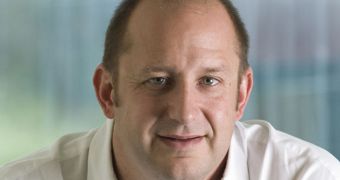A team of investigators from the University of California in Irvine (UCI) Sue & Bill Gross Stem Cell Research Center have recently made important strides in the field of using stem cells as therapies for mitigating the effects of injuries on the central nervous systems. The investigators managed to discover the mechanisms employed by adult neural stem cells, as they navigate through the human brain to the site of injuries, in order to fix the damages. This is the final piece to a puzzle that, once completely solved, could allow researchers to create new, stem cell-based therapies for inflammatory diseases of the brain, such as, for instance, multiple sclerosis (MS).
According to Center investigators Tom Lane and Kevin Carbajal, the leaders of the research effort, the answer to the riddle laid within the actions of the immune system. Details of their study appear in this week's early online issue of the esteemed scientific publication Proceedings of the National Academy of Sciences (PNAS). The experts believe that the new knowledge, which also includes details about how transplanted stem cells get targeted to the location where they are needed, could help inform bioengineers in developing new stem cell therapies aimed directly at neurological diseases whose main trait is inflammation. Multiple sclerosis is the most notorious example in this sense.
“Previously, we’ve seen that adult neural stem cells injected into the spinal column knew, amazingly, exactly where to go. We wanted to find what directed them to the right injury spots,” says Lane, who is also the Chancellor’s Fellow, and a UCI professor of molecular biology & biochemistry. “In this study, we’ve taken an important step by showing the navigational cues in an inflammatory environment like MS that guide stem cells. Hopefully, these cues can be incorporated into stem cell-based treatments to enhance their ability to repair injury,” the expert adds.
In previous studies that Lane and his team conducted, it was demonstrated that therapies based on adult neural stem cells were able to improve motor functions in mice with chronic MS symptoms. This is why the group believes that the new work could have far-reaching implications for human patients as well. Given the new knowledge, it may be safe to hypothesize that using adult stem cells, and knowing how to target them to where they need to go, may help human MS patients as well. Lane is the recent recipient of a Collaborative MS Research Center Award from the National Multiple Sclerosis Society

 14 DAY TRIAL //
14 DAY TRIAL //